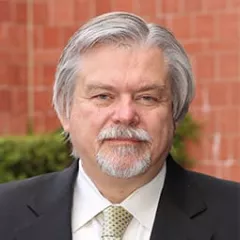
Thomas Coates, MD
I primarily work in two areas of basic and translational research: 1) the role of inflammation in the genesis of vascular disease in sickle cell disease; 2) the detection and management of transfusion related iron overload. Our research employs various engineering-intensive methodologies (MRI, laser Doppler flow, digital image analysis, signal processing) to explore the basic mechanisms of sickle cell disease and to measure the effect of various treatment modalities.
We use direct measures of microvascular blood flow to monitor the process of vasoocclusion and relate it to simultaneous measures of autonomic nervous system function. These methodologies translate in measurements that can be used to follow patients clinically. In collaboration with members of the Cardiology, Pulmonology, and Radiology Departments at Children’s Hospital Los Angeles, the Departments of Biomedical Engineering and Physiology/Biophysics at the Keck School of Medicine, we devised methods to measure the sickling process in human sickle cell subjects and relate these measurements to clinical factors that modulate disease severity.
Pediatric Hematology; Neutrophil Dysfunction; Sickle Cell Disease; Thalassemia; Coagulation Defects
Education
University of Michigan Medicine School
Indiana University Medical Center: Pediatrics Internship
Indiana University Medical Center: Pediatric Residency
Indiana University Medical Center: Pediatric Hematology/Oncology
Accomplishments
Pediatrics: American Board of Pediatrics; Pediatric Hematology-Oncology: American Board of Pediatrics
Publications
Prediabetes, elevated iron and all-cause mortality: a cohort study. Mainous AG 3rd, Tanner RJ, Coates TD, Baker R. BMJ Open. 2014 Dec 11;4(12):e006491. doi: 10.1136/bmjopen-2014-006491.
Iron toxicity and its possible association with treatment of Cancer: lessons from hemoglobinopathies and rare, transfusion-dependent anemias. Puliyel M, Mainous AG 3rd, Berdoukas V, Coates TD. Free Radic Biol Med. 2015 Feb;79:343-51. doi: 10.1016/j.freeradbiomed.2014.10.861. Epub 2014 Nov 14.
Population based surveillance in sickle cell disease: methods, findings and implications from the California registry and surveillance system in hemoglobinopathies project (RuSH). Paulukonis ST, Harris WT, Coates TD, Neumayr L, Treadwell M, Vichinsky E, Feuchtbaum LB. Pediatr Blood Cancer. 2014 Dec;61(12):2271-6. doi: 10.1002/pbc.25208. Epub 2014 Aug 30.
The impact of chelation therapy on survival in transfusional iron overload: a meta-analysis of myelodysplastic syndrome.
Mainous AG 3rd, Tanner RJ, Hulihan MM, Amaya M, Coates TD. Br J Haematol. 2014 Dec;167(5):720-3. doi: 10.1111/bjh.13053. Epub 2014 Jul 22. Review. No abstract available.
A significant proportion of thalassemia major patients have adrenal insufficiency detectable on provocative testing. Huang KE, Mittelman SD, Coates TD, Geffner ME, Wood JC. J Pediatr Hematol Oncol. 2015 Jan;37(1):54-9. doi: 10.1097/MPH.0000000000000199.
Research
Sickle cell disease is a life threatening disease. The blood becomes very thick and the viscosity changes which results in the blood not flowing and causing ultimately life threatening organ damage and shortened survival because of poor profusion. Children's Hospital Los Angeles has one of the largest sickle cell centers in California. We are one of only 10 federally-funded research programs in sickle cell disease. Our goal is to keep kids with sickle cell disease and thalassemia healthy and to make any complications related to their disease much less damaging. To do this, we need better and less invasive methods for tracking the progress of their disease.
Our laboratory utilizes engineering approaches, like MRI , laser Doppler flow, and near infrared spectroscopy to better understand the basic vascular physiology of sickle cell disease and other inherited hematologic disorders. We develop novel techniques and analysis methodologies blood flow, vascular response, tissue iron and oxygen delivery.
Visit the Coates Laboratory.
Media
Hematology Advisor - Newborn Screening for Hemoglobinopathies Needs Paradigm Shift
iMedicalApps – Children’s Hospital Los Angeles launches app for sickle cell disease study
Los Angeles Times - Op-Ed: Amid a nationwide blood shortage, your donation could save my life


